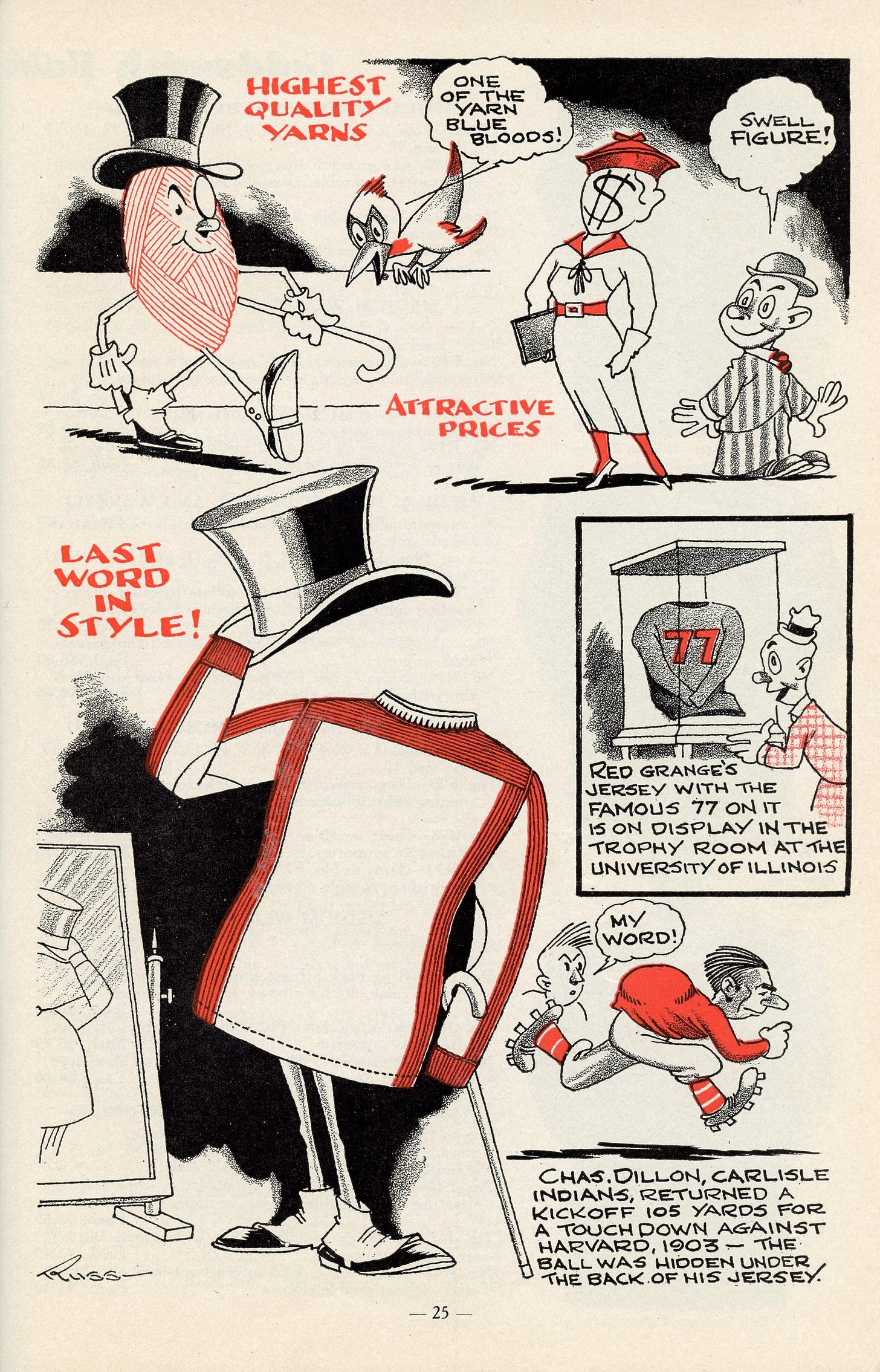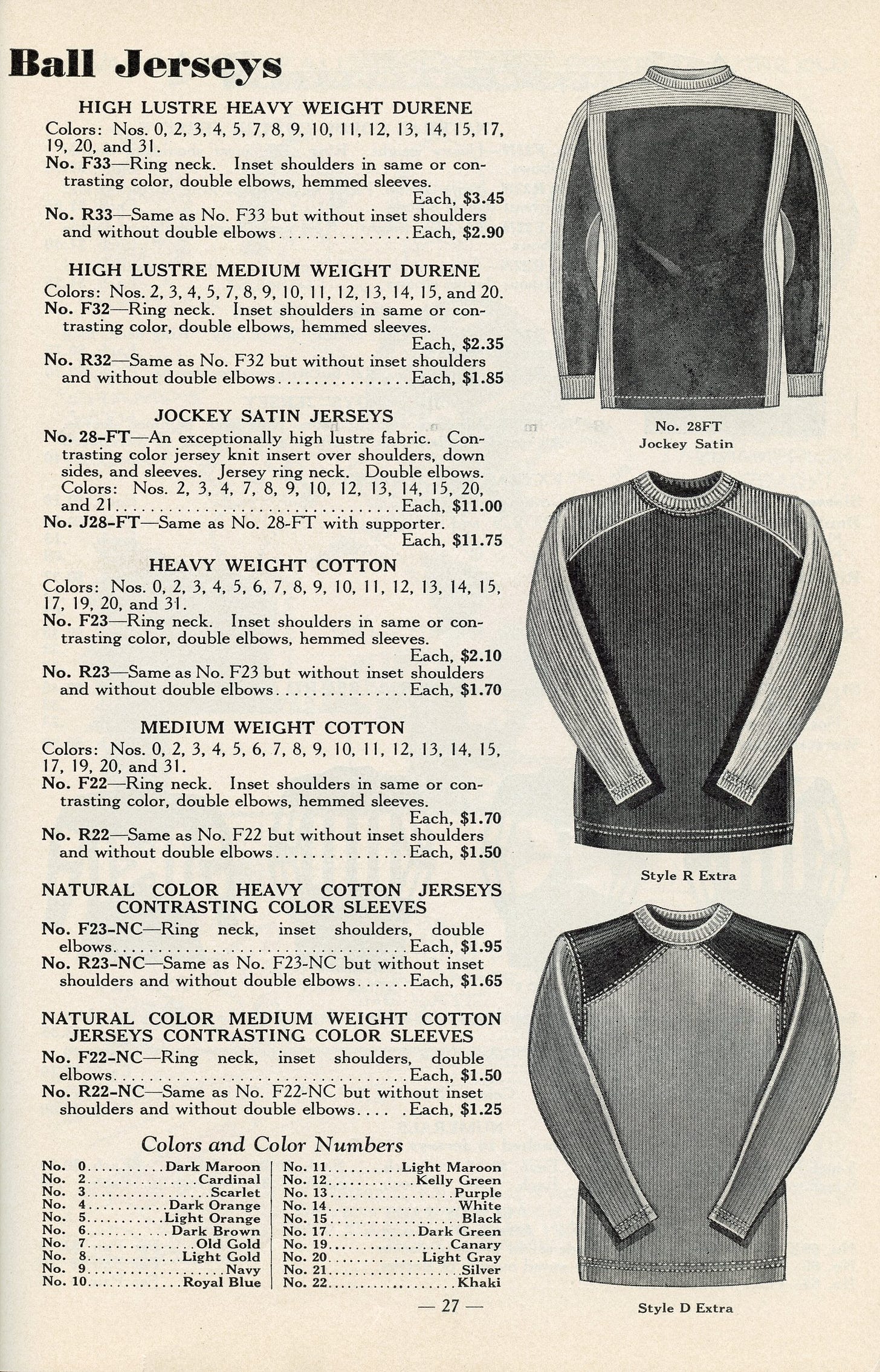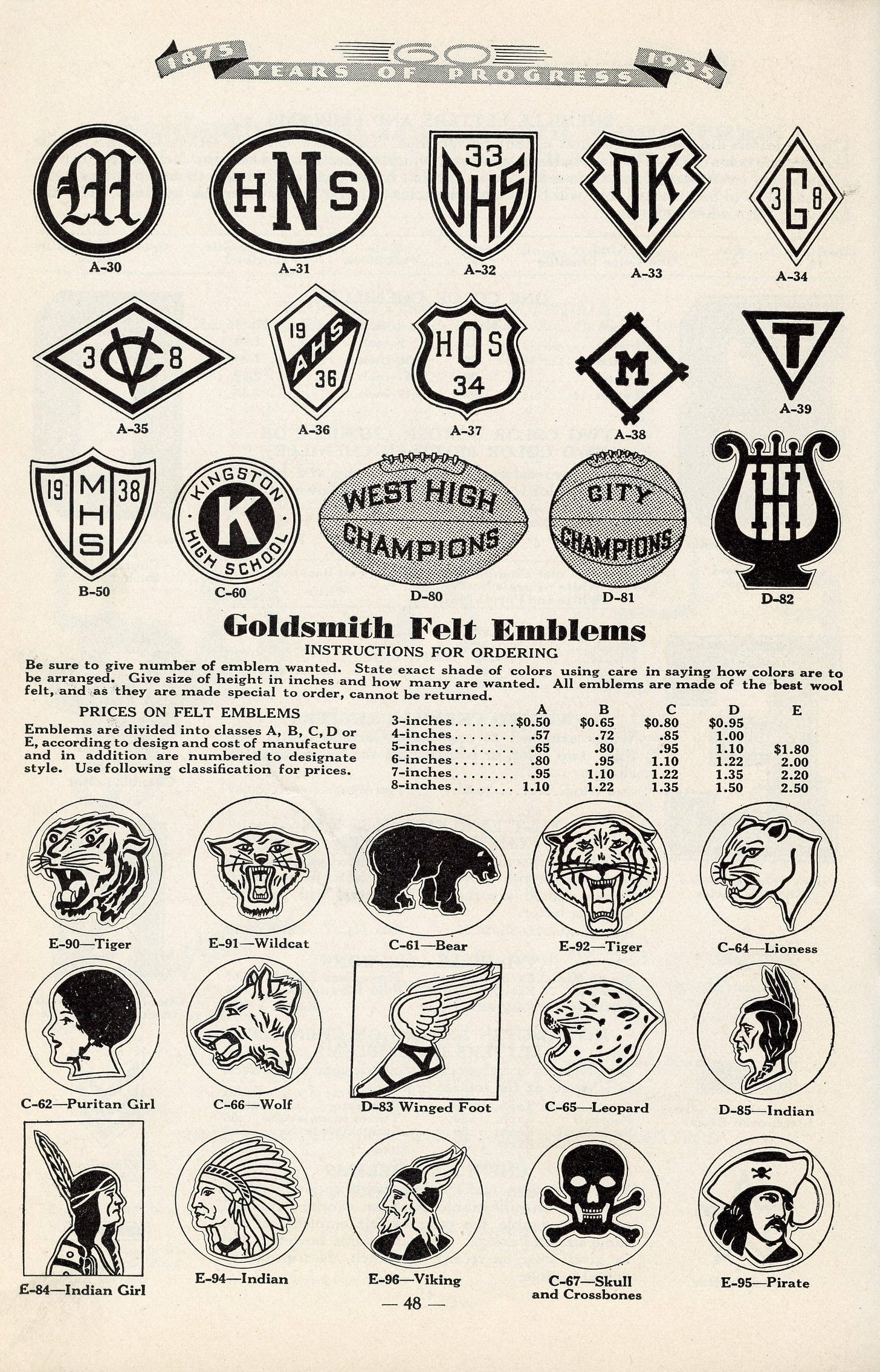Today's Tidbit... 1935 GoldSmith Sports Equipment Jerseys
This is the fifth of seven articles in a series covering the 1935-36 Fall & Winter GoldSmith Athletic Equipment catalog. Preceding each section of the catalog is a one-page cartoon about the history of that type of equipment, in today's case, football jerseys.
Click the appropriate link for other stories in the series:
Consulting Staff | Footballs | Shoes | Pants | Jerseys | Helmets | Shoulder Pads | Miscellaneous
According to GoldSmith’s jersey cartoon, their goods were of the highest quality, attractively priced, and the last word in style. The pages that follow show they were not kidding. The cartoon also tells us that Red Grange’s jersey sits in the trophy room at Illinois, and deservedly so. His number was the first to be retired in any sport.
By 1935, sporting goods manufacturers like GoldSmith were no longer spinning the same old yarns, at least not exclusively. Worsted wool still comprised a large portion of their jersey offerings, but rayon and durene (a combination of rayon and cotton) entered the fray as fabrics that were lighter, less water absorbent, longer lasting, form-fitting, and more easily dyed in shades unachievable with natural fabrics. Teams could order versions in one color or with inset shoulders in contrasting colors.
Unfortunately, the jockey satin jersey was the height of 1930s fashion, featuring contrasting colors on the shoulder, down the sides, and sleeves. These even had a satin finish that made the girls swoon.
If you couldn’t go all the way with jockey satin, the R series was an alternative that came in heavy cotton with a contrasting color on the shoulder and sleeves. Even better, the jerseys came in 22 colors, allowing for 462 possible jersey designs if I got my permutations and combinations right.
The bottom third of page 28 encapsulates the battle for the future of football jerseys. GoldSmith offered four stickem cloth (GoldSmith called their rubberized cotton SnugTex) designs, but those were going out of style due to the increased use of numbers on the front of football jerseys. Teams could order numerals standing five to twelve inches tall and mix and match number sizes on the front and back.
Starting in the 1880s, football players who played in the big rivalry games kept their game jerseys with the school letter emblazoned on the front. Later, schools issued separate letter sweaters, and in the 1930s, letter jackets emerged as an athletic fashion choice. Other pages of the GoldSmith catalog offered letters, but page 48 offered a selection of sweet-looking emblems for sweaters or jackets.
Football equipment manufacturers enjoyed the last of their golden years in the 1930s. Most uniforms still used natural fabrics, and the helmets and shoulder pads were leather. Still, advances in engineering and technology would cause a shift to synthetic fabric and plastics as the choice for most equipment. Some manufacturers kept pace and made the changes. Others did not and saw more innovative competitors replace them.
Football Archaeology is reader-supported. Click here to buy one of my books or otherwise support the site.







Great story. Put my order in for one of the ones that snap on the bottom side for $6.65